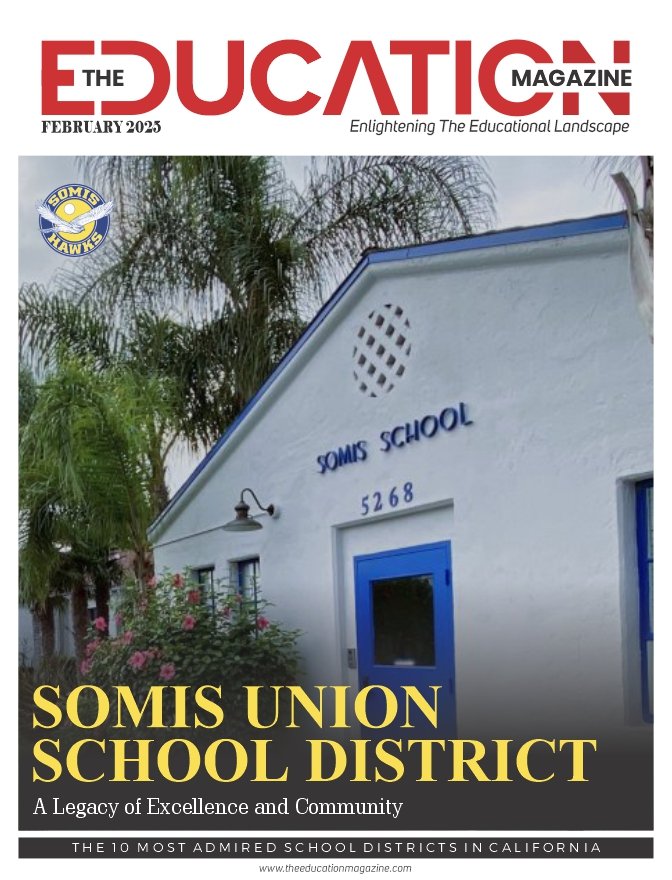Student loans are a headache, aren’t they? But the right student loan repayment plan (SLRP) could ease that burden more than you think. With so many plans and options out there, it’s no surprise people have questions—tons of questions. But don’t worry, we’ve got you covered. In this post, we’ll break down the top 15 FAQs about repayment plans, so you can confidently manage your loans and breathe a little easier. Ready to get some clarity and take control of your loans? Let’s get started!
Here are the top 15 FAQs on Student Loan Repayment Plan
1. What is a repayment plan for student loans?
A student loan repayment plan outlines how borrowers repay their loans after graduation, including payment amounts, loan terms, and interest rates. It’s essential to understand how these plans work to manage your finances effectively.
Federal student loans offer multiple repayment plans to fit different financial needs. The loan types, such as federal or private, impact the repayment structure. Federal loans often have fixed interest rates, while private loans may have variable rates. Repayment terms typically range from 10 to 30 years, depending on the student loan repayment plan you choose.
Monthly payments can either be fixed or income-driven. Income-driven plans adjust your payments based on your earnings, which can provide relief if your financial situation changes.
Looking ahead to 2025, new policies are expected, including introducing the Saving on a Valuable Education (SAVE) plan. This plan aims to simplify the repayment process, making it easier for borrowers to manage payments and potentially lower their monthly costs.
Choosing the right student loan repayment plan can help you stay on track financially and reduce stress in the long run. Stay updated on policy changes to make the best decision for your financial future.
2. What are the differences between the various repayment plans available?.
In the U.S., student loan repayment plans are structured to help borrowers manage their debt effectively. These plans offer different payment structures, terms, and interest rates to suit various financial situations.
Below is a detailed comparison of the most common repayment plans for federal student loans.

Key Statistics and Policies for 2025
Federal Student Loan Interest Rates:
- Direct Subsidized/Unsubsidized Loans: Approximately 6.53%
- Direct PLUS Loans: Approximately 9.08%
3. What is Plan 1 or Plan 2 student loan?
When navigating your student loan repayment plan, understanding the differences between Plan 1 and Plan 2 is essential.
Plan 1: Pay As You Earn (PAYE)
- Eligibility: To qualify for PAYE, you must have taken your first federal student loan after October 1, 2007. You also need a Direct Loan disbursement after October 1, 2011.
- Repayment Terms: You pay 10% of your discretionary income, but it won’t exceed what you would pay under the standard 10-year repayment plan. After 20 years of qualifying payments, your remaining balance is forgiven.
- Payments: If your income drops below a certain threshold, your monthly payment could be as low as $0.
Plan 2: Saving on a Valuable Education (SAVE)
- Eligibility: The SAVE plan is available to all federal loan borrowers, significantly expanding eligibility.
- Repayment Terms: Payments are capped at 5% of discretionary income for undergraduate loans. If your balance is under $12,000, forgiveness may occur in as little as 10 years.
- Key Benefits: SAVE prevents loan balances from growing due to interest accumulation, addressing a major concern with previous IDR plans.
Additional Context for 2025
- Interest Rates: For new federal loans, the fixed interest rate is currently 6.53%. This rate is essential for understanding your overall payment obligations.
Forgiveness Programs:
The Public Service Loan Forgiveness (PSLF) program remains vital, allowing forgiveness after 120 qualifying payments while working in public service jobs.
Automated Enrollment:
Efforts are underway to streamline enrollment into IDR plans. This initiative aims to mitigate default rates, particularly attracting borrowers who previously faced complex requirements.
Quick Comparison
| Feature | Plan 1 (PAYE) | Plan 2 (SAVE) |
| Discretionary Income % | 10% | 5% |
| Forgiveness Timeline | 20 years | As little as 10 years |
| Eligibility | Limited to certain loans | All federal loans |
| Interest Rate | 6.53% | 6.53% |
| Qualifying Payments | 20 | 10 |
Both plans are crucial for managing your student loan repayment plan effectively. Understanding these options allows you to select a path that best fits your financial situation.
4. What is a Plan 4 student loan?
Plan 4 is often misunderstood as a federal student loan repayment plan but is not officially recognized. Sometimes people confuse it with newer repayment plans like the Saving on a Valuable Education (SAVE) plan, which has gained attention due to its recent implementation.
New Developments in Student Loan Repayment Plan
The Biden administration’s SAVE plan is a significant development in student loan repayment plan. This plan provides increased flexibility and aims to reduce stress for borrowers. It is being hailed as the future of income-driven repayment plans, especially with its borrower-friendly approach.
Benefits of the SAVE Plan
The SAVE plan benefits a diverse group of borrowers by significantly lowering monthly payments. It is expected to assist over millions of people returning to repayment. This plan stands out in the range of other plans from the student loan repayment plan for its ability to ease the financial burden on borrowers.
Structure and Simplification
A key feature of the SAVE plan is automatic enrollment for delinquent borrowers. It also simplifies the recertification process, which has historically been a challenge for borrowers trying to manage their loans under different student loan repayment plan with lower monthly payments.
5. How does the new Saving on a Valuable Education (SAVE) plan affect monthly payments?
The SAVE plan transforms how monthly payments are calculated for federal student loans. This plan evaluates payments based on income and family size.
- Income-Driven Payments: Under the SAVE plan, monthly payments are set at a percentage of discretionary income. To calculate discretionary income, subtract 225% of the federal poverty line from the borrower’s Adjusted Gross Income (AGI). The SAVE plan calculates monthly payments based on a percentage of discretionary income. Discretionary income is defined as the borrower’s income after subtracting 225% of the federal poverty line. For undergraduate loans, payments are capped at 5% of discretionary income. Borrowers earning $32,800 or less annually (or $67,500 for a family of four) will have a $0 monthly payment.
- Interest Benefits: The SAVE plan prevents loan balances from increasing due to accrued interest. If a borrower’s payment doesn’t cover the monthly interest, the government pays the remaining balance. This subsidy ensures borrowers won’t see their loan amounts rise, providing peace of mind.
- Timeline for Implementation: The SAVE plan will be fully effective in July 2024. Additional benefits will further lower payments for undergraduate borrowers and simplify the repayment process.
This comprehensive approach to student loan repayment ensures affordability and stability, making it easier for borrowers to manage their student loan repayment plan.
6. What are the downsides of the SAVE plan?
While the SAVE plan provides benefits for low- and middle-income borrowers, it also has notable downsides worth considering.

7. Can I switch repayment plans if my financial situation changes?
Yes, borrowers can switch student loan repayment plan for federal student loans whenever their financial situation changes. This flexibility is a crucial feature of federal student loans. It enables borrowers to adapt their repayment strategy based on their current financial realities.
How to Switch Plans?
To change your existing student loan repayment plan, contact your loan servicer. Complete the necessary paperwork, typically an application specific to the new repayment plan. You can switch as often as needed, depending on your circumstances.
Available Repayment Options
Here’s a quick look at different repayment plans:
| Repayment Plan | Description |
| Standard Repayment Plan | Fixed monthly payments over ten years. |
| Graduated Repayment Plan | Payments start low and increase every two years. |
| Extended Repayment Plan | Payments extend up to 25 years for loans over $30,000. |
| Income-Driven Repayment (IDR) | Payments based on income and family size. |
| SAVE Plan | Caps payments at 5% of discretionary income for undergrad loans. |
| Loan Servicing Delays | Switching plans may involve processing delays. Be aware of upcoming payment deadlines to avoid missed payments. |
Understanding your student loan repayment plan options helps you make informed decisions and manage your debt effectively.
8. What student loans are not eligible for forgiveness?
Not all federal student loans qualify for forgiveness under current programs.
Parent PLUS Loans are one type that does not qualify. Although borrowers can apply for income-driven repayment plans by consolidating these loans, they are not eligible for forgiveness under the same terms as Direct Loans without consolidation.
Another category is Private Student Loans. These loans are not eligible for any federal forgiveness programs. They are subject to the terms set by private lenders, which typically do not include forgiveness options.
Additionally, Defaulted Loans cannot be forgiven. If your federal student loans are in default status, you must rehabilitate or consolidate them to regain good standing before pursuing forgiveness options.
Understanding which loans do not qualify for forgiveness can help you better manage your student loan repayment plan. Being aware of these details empowers you to make informed decisions about your financial future.
10.Can private student loans be forgiven?
Private student loans generally have limited options for forgiveness. However, under specific circumstances, some relief may be available.
Conditions for Forgiveness:
- Permanent Disability: Some lenders may discharge loans if the borrower becomes totally and permanently disabled. This usually requires documentation.
- Death: If a borrower dies, many lenders forgive the remaining balance. However, some may hold cosigners responsible for the debt.
- Discharging in Bankruptcy: Discharging private loans through bankruptcy is challenging. It requires proving “undue hardship,” which often necessitates legal assistance.
- Limited Lender Policies: Some lenders offer hardship programs or financial relief, but these policies vary. Borrowers should be proactive in discussing options with their lenders.
10.How long until my student loans are forgiven?
The timeline for a student loan forgiveness plan varies by repayment plan and borrower eligibility. Understanding these timelines can help you plan your finances more effectively.
Income-Driven Repayment Plans (IDR)
Under plans like SAVE or PAYE, borrowers can receive forgiveness after:
- 20 years for undergraduate-only loans.
- 25 years for loans including graduate education.
Public Service Loan Forgiveness (PSLF)
If you work full-time for a qualifying nonprofit or government employer, your remaining balance may be forgiven after 120 qualifying payments (10 years).
Important Adjustments
The IDR Account Adjustment program credits borrowers for previous payments. This program ends on September 1, 2024. To maximize credits, consider consolidating loans before this deadline.
Additionally, new administrative forgiveness initiatives are expected to launch in October 2024. These may benefit many borrowers, especially those who entered repayment over 20 years ago.
By knowing these timelines, you can navigate your student loan repayment plan more effectively and enhance your financial well-being.
11. Will borrowers still have access to loan forgiveness under IDR plans in 2025?
Yes, borrowers will still have access to loan forgiveness under IDR plans in 2025. However, significant changes and uncertainties may arise as new policies are enacted.
Under existing federal IDR plans, borrowers who make regular payments based on their income may qualify for forgiveness after 20 to 25 years of repayment. This depends on the specifics of their loans and the plan they are enrolled in. The Saving on a Valuable Education (SAVE) plan caps payments at 5% of discretionary income for undergraduate borrowers. Importantly, borrowers earning less than $32,800 could have a $0 monthly payment.
Ongoing legal challenges to various student loan forgiveness programs create uncertainty about their future. A recent court ruling temporarily blocked elements of the SAVE plan, highlighting shifts in borrowers’ rights.
The deadline for borrowers to recertify their income and family size for IDR plans is extended to November 1, 2024. Borrowers must keep their information updated to maintain their status and eligibility in 2025.
13. Are there any changes in eligibility for Income-Driven Repayment (IDR) plans in 2025?
The eligibility criteria for Income-Driven Repayment (IDR) plans will change in 2025. This is due to initiatives under the Project 2025 policy framework, which lawmakers have proposed. These adjustments aim to make the student loan repayment plan more accessible.
Reduction in Payment Threshold
The Project 2025 proposal suggests a significant shift. It lowers the payment threshold from about approximately $34,000 (225% of the federal poverty line) to as low as $15,000. Consequently, single borrowers earning just $15,000 may have to start making monthly payments beginning in 2025. This change increases the number of borrowers facing payments, even those with lower incomes.
Changes Under the SAVE Plan
The SAVE plan replaces the REPAYE plan. This plan broadens access to loan forgiveness. Now, all borrowers with federal direct loans qualify. This is a significant improvement, as previous plans had more restrictive requirements. Overall, these changes make the student loan repayment plan more inclusive and beneficial for borrowers.
13.Who qualifies for student loan forgiveness in 2025?
Various programs exist in 2025 for federal student loan forgiveness in the USA. Each program has unique eligibility criteria.
Income-Driven Repayment Plans
Borrowers enrolled in any Income-Driven Repayment Plan (IDR), including SAVE and PAYE, can have their remaining student debt forgiven. After making payments for 20 to 25 years, depending on the education level, forgiveness is possible. Notably, those with balances of $12,000 or less may qualify for forgiveness in as little as 10 years under the SAVE plan.
Public Service Loan Forgiveness (PSLF)
This program benefits borrowers working full-time for qualifying nonprofit or government employers. They can have their remaining balances forgiven after making 120 qualifying payments, which is equivalent to 10 years.
Teacher Loan Forgiveness
Eligible teachers can receive up to $17,500 in forgiveness. This applies after teaching full-time for five consecutive years at qualifying low-income schools.
One-Time IDR Account Adjustment
Another layer of forgiveness is the One-Time IDR Account Adjustment. This initiative aims to help borrowers in repayment for at least 20 to 25 years receive automatic loan forgiveness by September 2024. Borrowers must consolidate certain loan types before this date to ensure they qualify.
Exclusions
To qualify for any forgiveness program, borrowers must have federal student loans. Unfortunately, private student loans do not qualify for any federal forgiveness program.
14. Are Parent PLUS loans treated differently than other federal loans regarding repayment options in 2025?
Yes, Parent PLUS loans are treated differently than other federal loans, especially regarding repayment options. Understanding these differences can help you make informed decisions about your student loan repayment plan.
Interest Rates and Terms
Parent PLUS loans come with higher interest rates. As of 2023, the rate stands at 8.05%, compared to the federal undergraduate loan. This difference significantly impacts monthly payments, making it essential to plan accordingly.
Limited Repayment Plans
Parent PLUS borrowers have limited repayment options. They can access the Standard, Graduated, and Extended repayment plans. Unfortunately, these plans do not consider income or provide loan forgiveness after a certain number of payments.
| Repayment Plan | Eligibility | Income Consideration |
| Standard | Yes | No |
| Graduated | Yes | No |
| Extended | Yes | No |
| Income-Contingent | Yes (with conditions) | Yes (20% discretionary) |
Income-contingent repayment (ICR)
The only IDR plan available to Parent PLUS borrowers is the Income-Contingent Repayment plan. However, this requires consolidating Parent PLUS loans into a Direct Consolidation Loan first. The ICR plan can lead to higher monthly payments since it calculates payments based on 20% of discretionary income. In contrast, the newer SAVE plan requires only 5%.
Current Deadline for Action
Significant changes are coming in 2025. The Department of Education will close the “double-consolidation loophole.” Borrowers intending to utilize this strategy need to act quickly, as this option will not be available after July 1, 2025. This loophole allows borrowers to obscure the original nature of their loans during consolidation, enabling access to various IDR plans and significantly reducing monthly payments.
Upcoming Changes in 2025
Significant changes are coming in 2025. The Department of Education will close the “double-consolidation loophole.” This change will affect how Parent PLUS borrowers access the SAVE plan for lower payments. Therefore, borrowers should act quickly before July 1, 2025, to take advantage of current options.
15. Can international students get loans and qualify for repayment plans in the USA?
Yes, international students can secure loans in the USA, but the options and requirements differ from those available to U.S. citizens. While federal loans are typically off-limits, private and institutional loans can be viable alternatives. However, international students must meet specific eligibility criteria, such as having a U.S. co-signer or attending a qualified academic program.
Types of Loans Available
International students primarily rely on private loans. Here’s a breakdown:
| Loan Type | Description |
| Private Loans | Offered by banks, usually require a U.S. co-signer. |
| Institutional Loans | Some universities provide their own loan programs for international students. |
| Global Loan Programs | Offers loans without a co-signer, such as MPOWER Financing. |
Eligibility Criteria
International students must:
- Be enrolled in a qualifying academic program.
- Have a U.S. co-signer with a good credit history (except for some programs like MPOWER).
- Meet lender-specific requirements, such as academic performance or future earning potential.
Loan Coverage
International students can borrow up to the total cost of attendance, covering:
- Tuition Fees: Includes all academic-related costs.
- Living Expenses: Some loans may cover housing and food.
- Other Expenses: Books, travel, and health insurance.
Private lenders may offer loan amounts ranging from $2,001 to $100,000, depending on individual circumstances, creditworthiness, and program specifics.
Interest Rates
Interest rates vary widely across lenders:
- Fixed Rates: Typically range from 3.59% to 14.83%.
- Variable Rates: Range from 5.99% to 15.86%, based on financial indices like the Prime Rate or SOFR.
- Discounts: Some lenders offer rate discounts for auto-pay setup or bank membership.
Repayment Plans
International student loans offer various repayment options, such as:
- Full Deferral: Payments begin after graduation.
- Interest-Only Repayment: Pay only interest during studies.
- Immediate Repayment: Payments start immediately after disbursement.
International students should explore these student loan repayment plan options carefully to find the best fit for their financial situation.
Conclusion
In conclusion, navigating student loan repayment can be overwhelming, but understanding your options is crucial. With various plans like the SAVE plan and flexible switching between them, you can tailor a repayment strategy that suits your financial situation. Staying informed about changes and eligibility will empower you to make the best decisions for your future. Remember, you’re not alone on this journey—take control and breathe a little easier!










